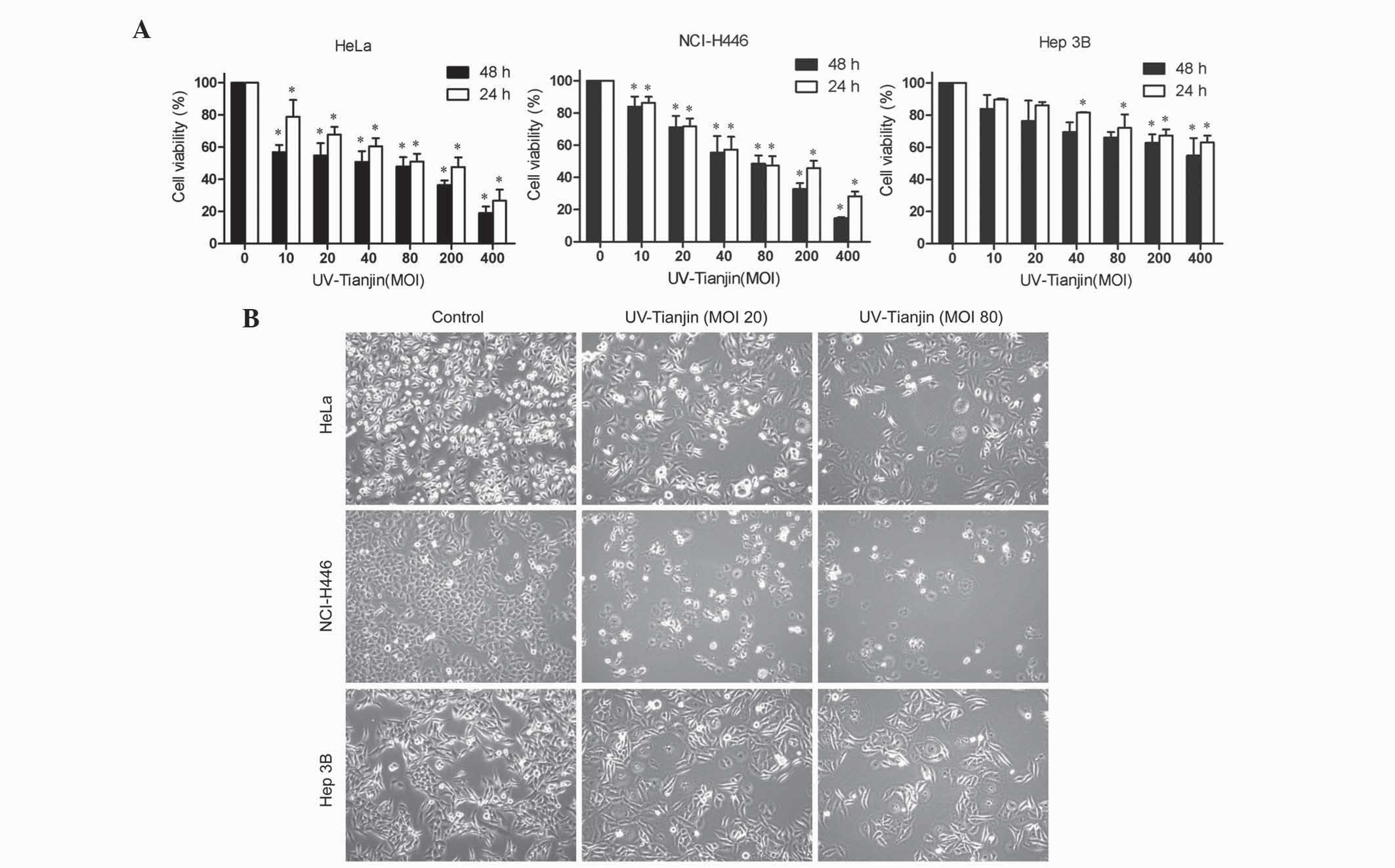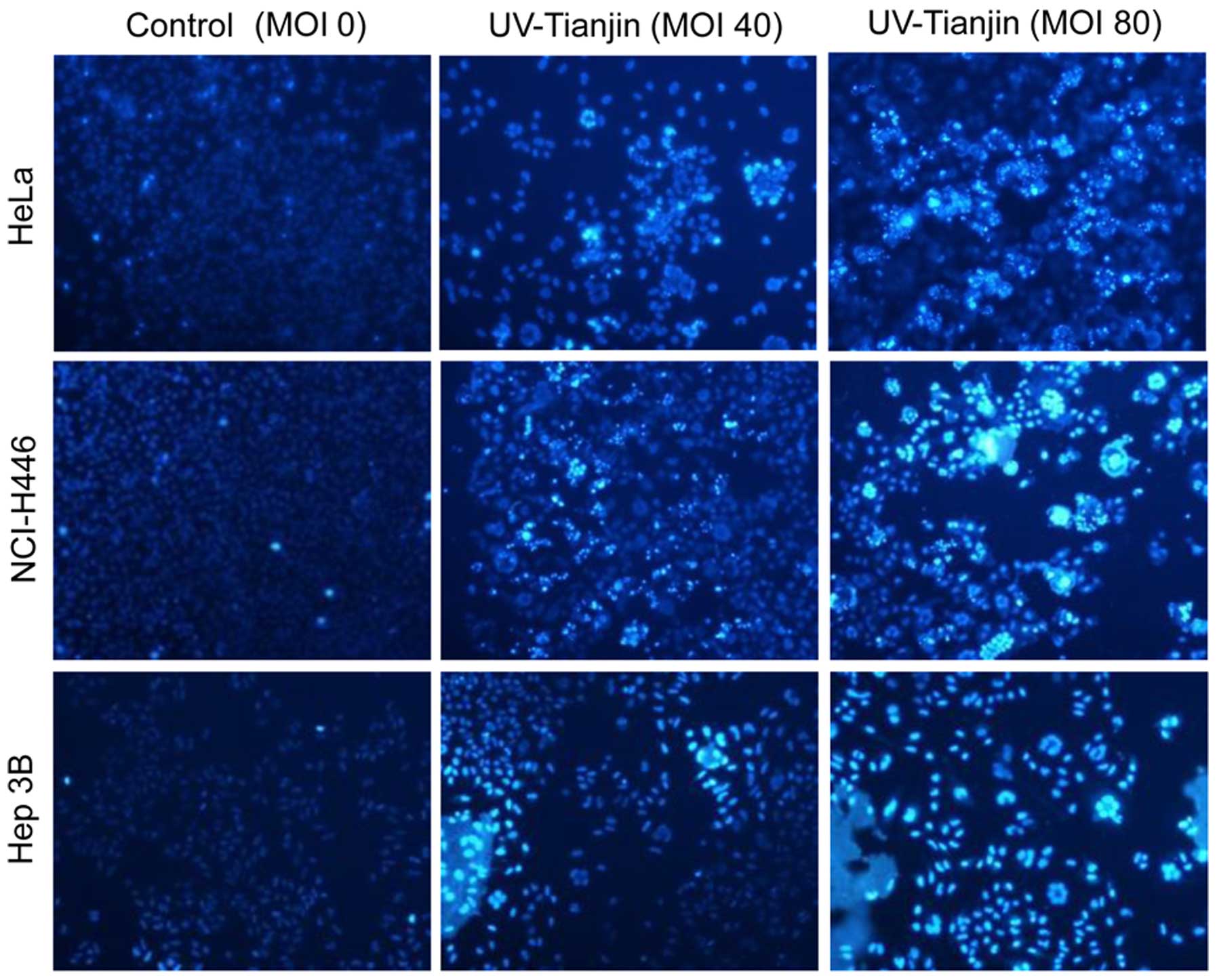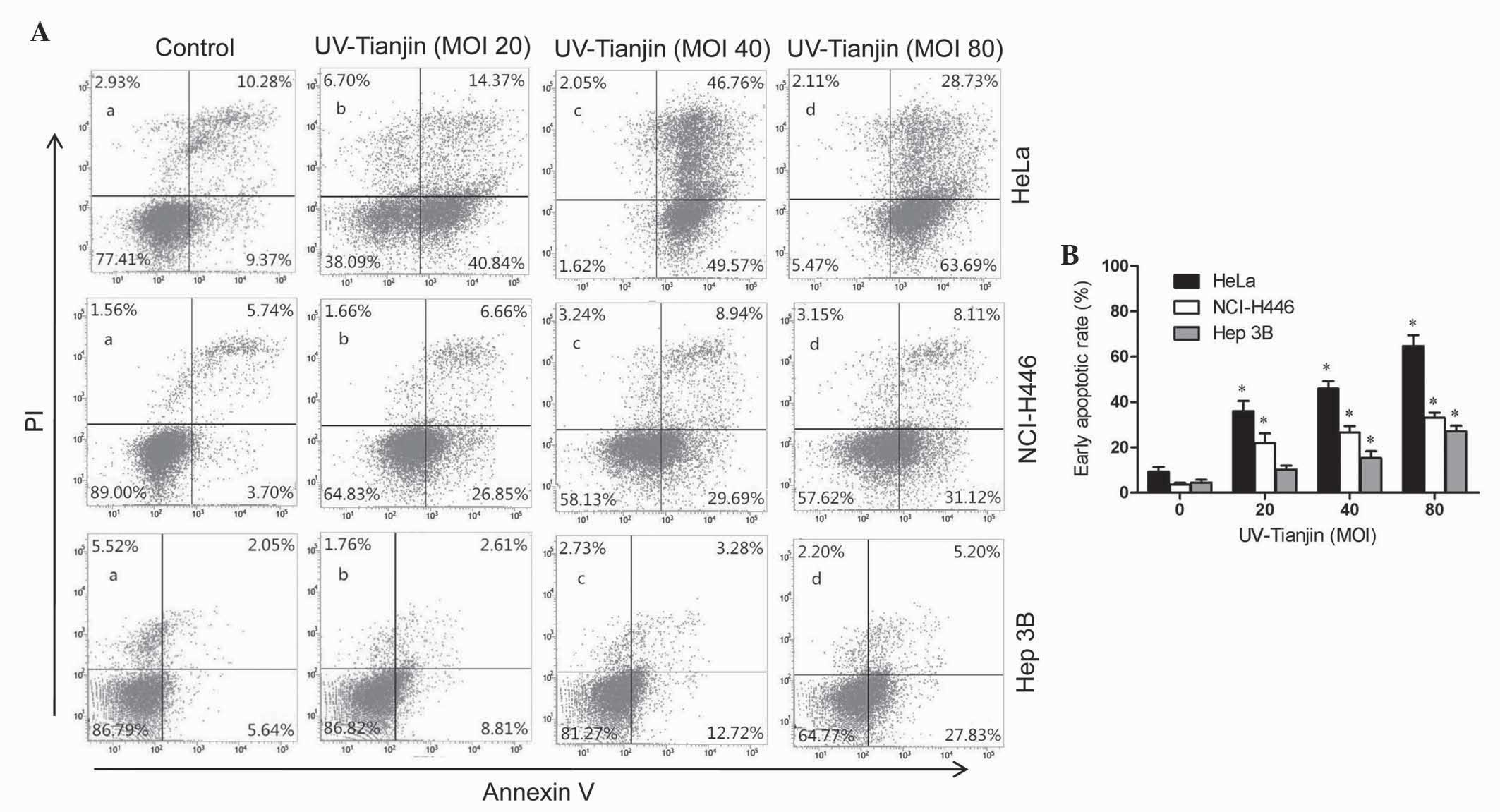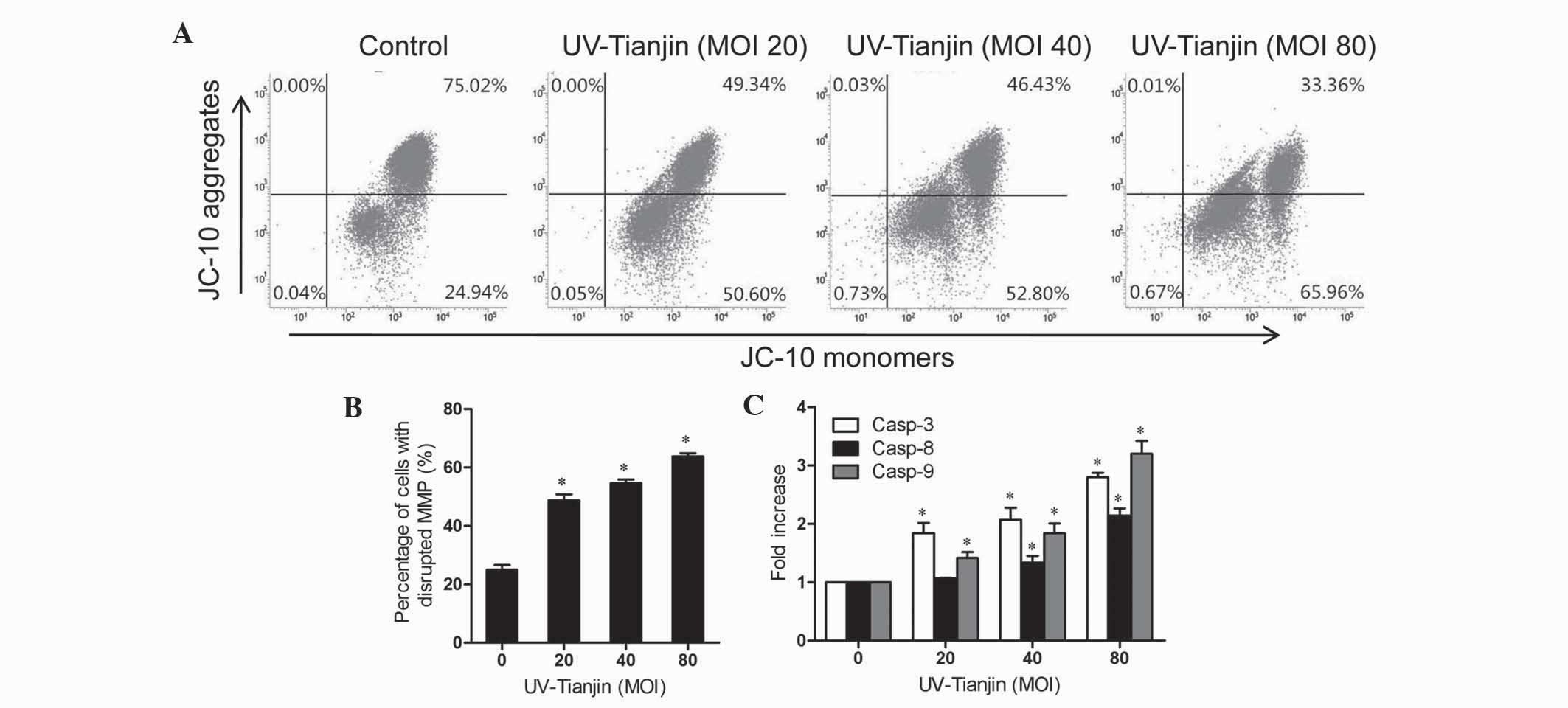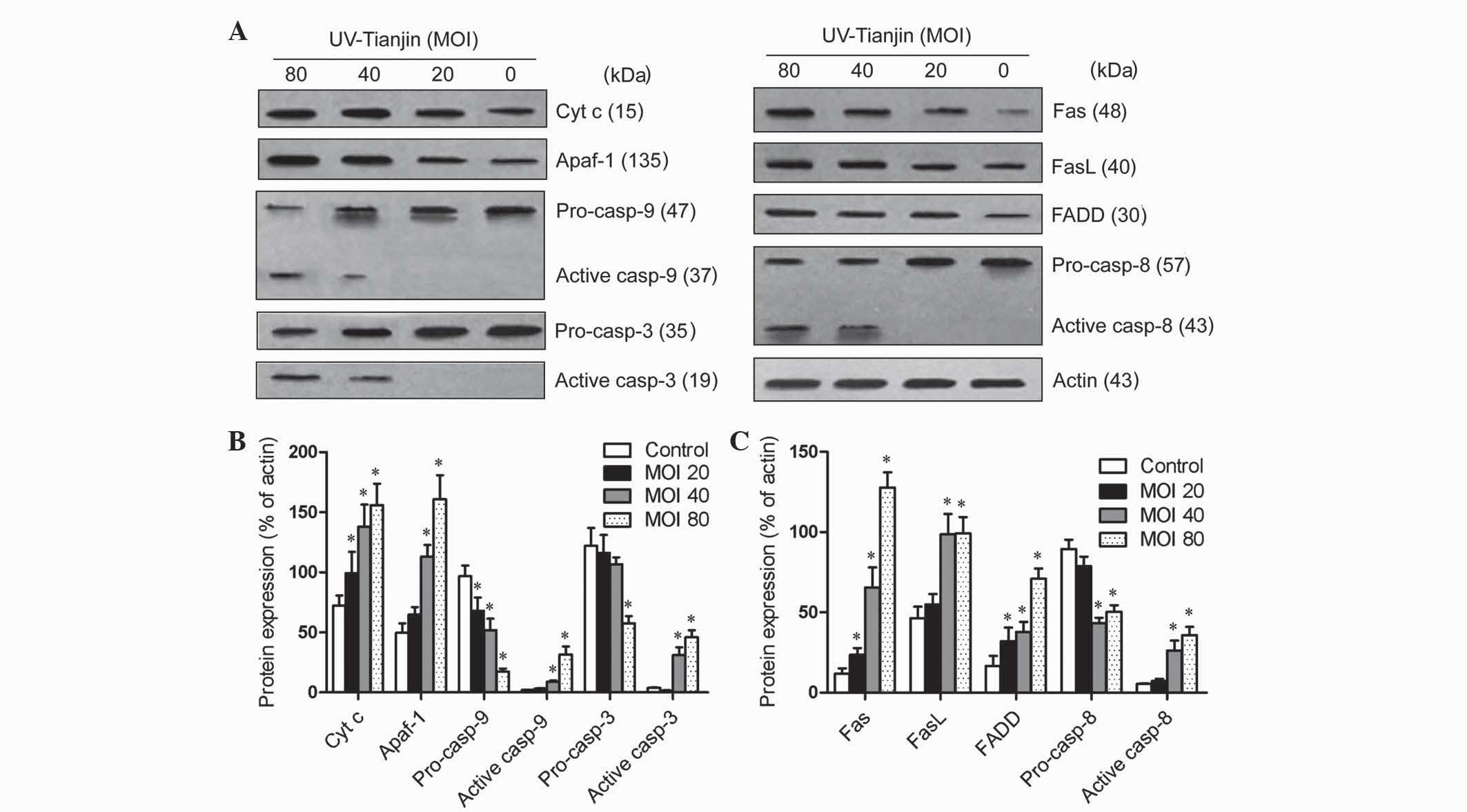|
1
|
Prat J, Franceschi S, Denny L and
Lazcano-Ponce E: Cancers of the female reproductive organs. World
Cancer Report 2014, World Health Organization. Stewart BW and Wild
CP: IARC Press. (Lyon). 678–680. 2014.
|
|
2
|
Forman D, Ferlay J, Stewart BW and Wild
CP: The global and regional burden of cancer. World Cancer Report
2014, World Health Organization. Stewart BW and Wild CP: IARC
Press. (Lyon). 28–30. 2014.
|
|
3
|
Theise ND, Chen CJ and Kew MC: Liver
cancer. World Cancer Report 2014, World Health Organization.
Stewart BW and Wild CP: IARC Press. (Lyon). 577–579. 2014.
|
|
4
|
Housman G, Byler S, Heerboth S, Lapinska
K, Longacre M, Snyder N and Sarkar S: Drug resistance in cancer: An
overview. Cancers (Basel). 6:1769–1792. 2014. View Article : Google Scholar : PubMed/NCBI
|
|
5
|
Yu H, Park J, Lee J, Choi K and Choi C:
Constitutive expression of MAP kinase phosphatase-1 confers
multi-drug resistance in human glioblastoma cells. Cancer Res
Treat. 44:195–201. 2012. View Article : Google Scholar : PubMed/NCBI
|
|
6
|
Guan M, Romano G, Coroniti R and Henderson
EE: Progress in oncolytic virotherapy for treatment of thyroid
malignant neoplasm. J Exp Clin Cancer Res. 33:912014. View Article : Google Scholar : PubMed/NCBI
|
|
7
|
Woller N, Gürlevik E, Ureche CI,
Schumacher A and Kühnel F: Oncolytic viruses as anticancer
vaccines. Front Oncol. 4:1882014. View Article : Google Scholar : PubMed/NCBI
|
|
8
|
Chiocca EA and Rabkin SD: Oncolytic
viruses and their application to cancer immunotherapy. Cancer
Immunol Res. 2:295–300. 2014. View Article : Google Scholar : PubMed/NCBI
|
|
9
|
Shi JD, Li XM, Liu FY, Jin MJ, Zhang GJ,
Liu M and Li Mei: Isolation and identification of a lethal viral
pathogen from common cotton-eared marmosets. Virologica Sinica.
18:357–361. 2003.
|
|
10
|
Shi LY, Li M, Yuan LJ, Wang Q and Li XM: A
new paramyxovirus, Tianjin strain, isolated from common
cotton-eared marmoset: Genome characterization and structural
protein sequences analysis. Arch Virol. 153:1715–1723. 2008.
View Article : Google Scholar : PubMed/NCBI
|
|
11
|
Zhang Q and Xu X, Yuan Y, Gong X, Chen Z
and Xu X: IPS-1 plays a dual function to directly induce apoptosis
in murine melanoma cells by inactivated Sendai virus. Int J Cancer.
134:224–234. 2014. View Article : Google Scholar : PubMed/NCBI
|
|
12
|
Nomura M, Shimbo T, Miyamoto Y, Fukuzawa M
and Kaneda Y: 13-Cis retinoic acid can enhance the antitumor
activity of non-replicating Sendai virus particle against
neuroblastoma. Cancer Sci. 104:238–244. 2013. View Article : Google Scholar : PubMed/NCBI
|
|
13
|
Morodomi Y, Yano T, Kinoh H, Harada Y,
Saito S, Kyuragi R, Yoshida K, Onimaru M, Shoji F, Yoshida T, et
al: BioKnife, a uPA activity-dependent oncolytic Sendai virus,
eliminates pleural spread of malignant mesothelioma via
simultaneous stimulation of uPA expression. Mol Ther. 20:769–777.
2012. View Article : Google Scholar : PubMed/NCBI
|
|
14
|
Shi L, Chen J, Zhong Q, Li M, Geng P, He
J, Han Z, Sheng M and Tang H: Inactivated Sendai virus strain
Tianjin, a novel genotype of Sendai virus, inhibits growth of
murine colon carcinoma through inducing immune responses and
apoptosis. J Transl Med. 11:2052013. View Article : Google Scholar : PubMed/NCBI
|
|
15
|
Yuan CX, Zhou ZW, Yang YX, He ZX, Zhang X,
Wang D, Yang T, Wang NJ, Zhao RJ and Zhou SF: Inhibition of mitotic
Aurora kinase A by alisertib induces apoptosis and autophagy of
human gastric cancer AGS and NCI-N78 cells. Drug Des Devel Ther.
9:487–508. 2015.PubMed/NCBI
|
|
16
|
Fionda C, Abruzzese M, Zingoni A, Soriani
A, Ricci B, Molfetta R, Paolini R, Santoni A and Cippitelli M:
Nitric oxide donors increase PVR/CD155 DNAM-1 ligand expression in
multiple myeloma cells: Role of DNA damage response activation. BMC
Cancer. 15:172015. View Article : Google Scholar : PubMed/NCBI
|
|
17
|
Freeman-Keller M and Weber JS:
Anti-programmed death receptor 1 immunotherapy in melanoma:
Rationale, evidence and clinical potential. Ther Adv Med Oncol.
7:12–21. 2015. View Article : Google Scholar : PubMed/NCBI
|
|
18
|
Park KC, Heo JH, Jeon JY, Choi HJ, Jo AR,
Kim SW, Kwon HJ, Hong SJ and Han KS: The novel histone deacetylase
inhibitor, N-hydroxy-7-(2-naphthylthio) hepatonomide, exhibits
potent antitumor activity due to cytochrome-c-release-mediated
apoptosis in renal cell carcinoma cells. BMC Cancer. 15:192015.
View Article : Google Scholar : PubMed/NCBI
|
|
19
|
Chen J, Lin C, Yong W, Ye Y and Huang Z:
Calycosin and genistein induce apoptosis by inactivation of
HOTAIR/p-Akt signaling pathway in human breast cancer MCF-7 Cells.
Cell Physiol Biochem. 35:722–728. 2015.PubMed/NCBI
|
|
20
|
Nishizaki T, Kanno T, Tsuchiya A, Kaku Y,
Shimizu T and Tanaka A:
1-[2-(2-Methoxyphenylamino)ethylamino]-3-(naphthalene-1-yloxy)propan-2-ol
may be a promising anticancer drug. Molecules. 19:21462–21472.
2014. View Article : Google Scholar : PubMed/NCBI
|
|
21
|
Kaneda Y, Nakajima T, Nishikawa T,
Yamamoto S, Ikegami H, Suzuki N, Nakamura H, Morishita R and Kotani
H: Hemagglutinating virus of Japan (HVJ) envelope vector as a
versatile gene delivery system. Mol Ther. 6:219–226. 2002.
View Article : Google Scholar : PubMed/NCBI
|
|
22
|
Smiley ST, Reers M, Mottola-Hartshorn C,
Lin M, Chen A, Smith TW, Steele GD and Chen LB: Intracellular
heterogeneity in mitochondrial membrane potentials revealed by a
J-aggregate-forming lipophilic cation JC-1. Proc Natl Acad Sci USA.
88:3671–3675. 1991. View Article : Google Scholar : PubMed/NCBI
|
|
23
|
Bredesen DE: Apoptosis: Overview and
signal transduction pathways. J Neurotrauma. 17:801–810. 2000.
View Article : Google Scholar : PubMed/NCBI
|
|
24
|
Gao H, Gong XC, Chen ZD, Xu XS, Zhang Q
and Xu XM: Induction of apoptosis in hormone-resistant human
prostate cancer PC3 cells by inactivated Sendai virus. Biomed
Environ Sci. 27:506–514. 2014.PubMed/NCBI
|
|
25
|
Kerr JF, Wyllie AH and Currie AR:
Apoptosis: A basic biological phenomenon with wide-ranging
implications in tissue kinetics. Br J Cancer. 26:239–257. 1972.
View Article : Google Scholar : PubMed/NCBI
|
|
26
|
Schwartzman RA and Cidlowski JA:
Apoptosis: The biochemistry and molecular biology of programmed
cell death. Endocr Rev. 14:133–151. 1993. View Article : Google Scholar : PubMed/NCBI
|
|
27
|
Bergamaschi G, Rosti V, Danova M, Lucotti
C and Cazzola M: Apoptosis: Biological and clinical aspects.
Haematologica. 79:86–93. 1994.PubMed/NCBI
|
|
28
|
Frejlich E, Rudno-Rudzińska J, Janiszewski
K, Salomon L, Kotulski K, Pelzer O, Grzebieniak Z, Tarnawa R and
Kielan W: Caspases and their role in gastric cancer. Adv Clin Exp
Med. 22:593–602. 2013.PubMed/NCBI
|
|
29
|
Ola MS, Nawaz M and Ahsan H: Role of Bcl-2
family proteins and caspases in the regulation of apoptosis. Mol
Cell Biochem. 351:41–58. 2011. View Article : Google Scholar : PubMed/NCBI
|
|
30
|
Cohen GM: Caspases: The executioners of
apoptosis. Biochem J. 326:1–16. 1997. View Article : Google Scholar : PubMed/NCBI
|
|
31
|
Pop C and Salvesen GS: Human caspases:
Activation, specificity, and regulation. J Biol Chem.
284:21777–21781. 2009. View Article : Google Scholar : PubMed/NCBI
|
|
32
|
Muzio M, Chinnaiyan AM, Kischkel FC,
O'Rourke K, Shevchenko A, Ni J, Scaffidi C, Bretz JD, Zhang M,
Gentz R, et al: FLICE, a novel FADD-homologous ICE/CED-3-like
protease, is recruited to the CD95 (Fas/APO-1) death-inducing
signaling complex. Cell. 85:817–827. 1996. View Article : Google Scholar : PubMed/NCBI
|
|
33
|
Srinivasula SM, Ahmad M, Fernandes-Alnemri
T and Alnemri ES: Autoactivation of procaspase-9 by Apaf-1-mediated
oligomerization. Mol Cell. 1:949–957. 1998. View Article : Google Scholar : PubMed/NCBI
|
|
34
|
Hua Q, Wu D, Chen W, Yan Z, Yan C, He T,
Liang Q and Shi Y: Molecular determinants of caspase-9 activation
by the Apaf-1 apoptosome. Proc Natl Acad Sci USA. 46:16254–16261.
2014. View Article : Google Scholar
|
|
35
|
Li P, Nijhawan D, Budihardjo I,
Srinivasula SM, Ahmad M, Alnemri ES and Wang X: Cytochrome c and
dATP-dependent formation of Apaf-1/caspase-9 complex initiates an
apoptotic protease cascade. Cell. 91:479–489. 1997. View Article : Google Scholar : PubMed/NCBI
|
|
36
|
Liu X, Kim CN, Yang J, Jemmerson R and
Wang X: Induction of apoptotic programin cell-free extracts:
Requirement for dATP and cytochrome c. Cell. 86:147–157. 1996.
View Article : Google Scholar : PubMed/NCBI
|
|
37
|
Kim HE, Du F, Fang M and Wang X: Formation
of apoptosome is initiated by cytochrome c induced dATP hydrolysis
and subsequent nucleotide exchange on Apaf-1. Proc Natl Acad Sci
USA. 102:17545–17550. 2005. View Article : Google Scholar : PubMed/NCBI
|
|
38
|
Bao Q, Lu W, Rabinowitz JD and Shi Y:
Calcium blocks formation of apoptosome by preventing nucleotide
exchange in Apaf-1. Mol Cell. 25:181–192. 2007. View Article : Google Scholar : PubMed/NCBI
|
|
39
|
Acehan D, Jiang X, Morgan DG, Heuser JE,
Wang X and Akey CW: Three-dimensional structure of the apoptosome:
Implications for assembly, procaspase-9 binding, and activation.
Mol Cell. 9:423–432. 2002. View Article : Google Scholar : PubMed/NCBI
|
|
40
|
Nagata S and Golstein P: The Fas death
factor. Science. 267:1449–1456. 1995. View Article : Google Scholar : PubMed/NCBI
|
|
41
|
Waring P and Müllbacher A: Cell death
induced by the Fas/Fas ligand pathway and its role in pathology.
Immunol Cell Biol. 77:312–317. 1999. View Article : Google Scholar : PubMed/NCBI
|
|
42
|
Kruidering M and Evan GI: Caspase-8 in
apoptosis: The beginning of ‘the end’? IUBMB Life. 50:85–90. 2000.
View Article : Google Scholar : PubMed/NCBI
|



